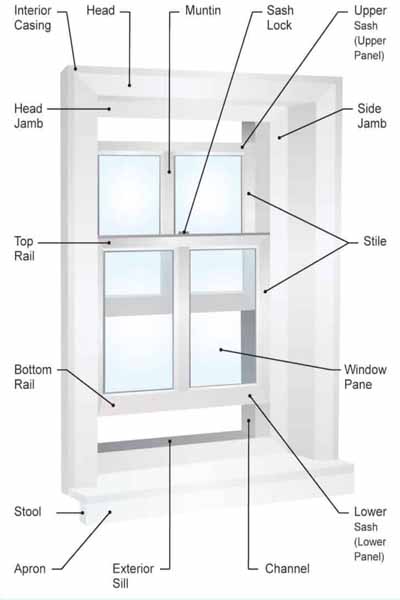How We Inspect Windows and Doors
When the inspector from Home Inspections, LLC comes to your home or a home you are thinking of buying, one of the most important aspects we inspect is the windows and doors of the home. Windows and doors add beauty and style to a home, provide points of access, and admit natural light.
Problems with windows and doors can be costly, and a failed door or window may just be the beginning of the problem. An inspection can save you a lot of money and a lot of heartache by identifying problems that can be easily fixed.
Window Inspection Checklist
While windows admit light into your living space, they also perform the important job of protecting your house from the weather outside. When Home Inspections, LLC inspects a window, the most important aspect for us is to identify if the window is installed properly and if all components of the window unit are sealed properly. A properly installed modern window, with the seals intact, will not allow water to leak into a home nor let heat (and money) fly out all winter.
We’ll perform these steps for you:
- We’ll inspect weather-stripping and caulking around windows. We look at all windows to identify if there is an air- and water-tight seal around each one.
- We’ll search for cracks and gaps in window frames, as well as where the window meets the brick or siding. Based on our findings in Ohio homes, some have as much as 3 square feet of gap space from the total area of small cracks and holes. The heat loss from this much leakage is equivalent to leaving a full-size window open all winter long!
- From the inside of the home, we’ll check for drafts near windows. We may discover that the draft is due to window frame rot or the deterioration of window caulking.
- We’ll inspect the glass panes to identify if there are scratches or cracks on the panes themselves.
- The window is easy to open and close.
- Cranks or turn handles function correctly and easily.
- Window locks function properly.
- Safety stops are in place and work properly, where applicable.
- The screen mesh or frame is undamaged.
- Windows with tilt-in features work properly, seal correctly, and return easily to the right position.
Once we look at the seals in and around the window, we’ll test every window to confirm if:
Send Us a Message
"*" indicates required fields
What Could Go Wrong with a Window?
Windows and doors seem simple. We take them for granted until something goes wrong, and since a properly installed window or door rarely has a problem, we don’t think about them.
Old windows are difficult to open and close, lack safety features that protect you from injury, and they are woefully inefficient, costing you more in heating and cooling costs than a house like yours should.
Fortunately, most name-brand windows are made very well, and if installed correctly, they can be virtually problem-free for many years. However, despite their advanced design and technology, even newer, top-of-the-line windows can experience problems if the installation isn’t done right.
Whether the windows are new or old, we give you a clear-eyed assessment of your risk of window problems.
How Insulating Glass Works
To understand what could go wrong with a window, it’s helpful to know how today’s energy-efficient windows are constructed.
A window made with double-pane glass, also called insulating glass (IG), is a more energy-efficient window.
The key to improved insulative performance is the addition of gases (like argon and krypton), films (thin sheets of various materials applied to the surface of the glass), extra panes of glass, and coatings like Low-E (low emissivity or heat loss).
These windows are warm to the touch, minimize the risk of condensation damage, and lower your heating and cooling bills.
IG is created by bonding two panes of glass together while maintaining a ½ to ¾-inch space between them. Today, most high-quality double pane windows have two perimeter seals, an inner seal, and an outer seal. (see illustration)
Insulating glass seals are designed to withstand the weather – heat, cold, wind, rain, and even objects that fly around in a storm. The seal failure rate is low, but remember, if you have 20, 30, or more windows in your home, chances are higher that one or more glass units will have a broken seal.
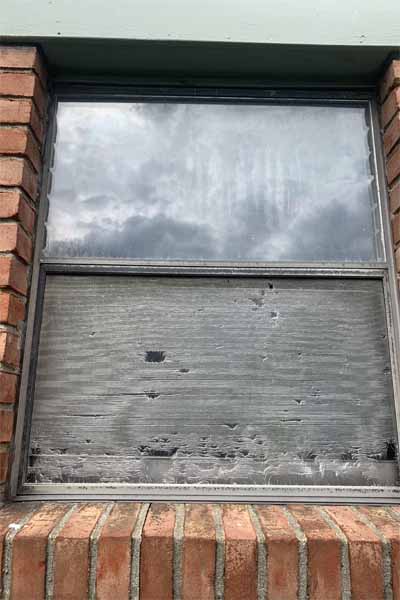
Door Inspection checklist
Doors provide the first line of security defense for your home, your family, and your possessions. Doors must do their job perfectly.
For that reason, your Home Inspections LLC inspector will test and inspect to identify if:
- The door operates smoothly and quietly without binding, scraping, or grinding.
- Weather-stripping and caulking around externally facing doors has an airtight seal around each one.
- The movement of the door is free of any obstruction.
- The garage door stops softly at the floor and the top of its opening motion (including electric door opener).
- All automated controls are functioning properly (open/close/stop/lock/unlock buttons, key controls, etc.).
- Safety devices function properly (photo-eyes, safety edges, horns, lights).
- All safety and warning labels are intact.
- We also visually inspect all of the following to identify any structural or functional problems.
- We'll check to identify if:
- The door is level (door should not be visually “crooked”).
- Hinges (center and end hinges) are undamaged and have no loose fasteners.
- Rollers are undamaged and unworn.
- Cables lack signs of damage or wear (e.g. fraying).
- Bottom brackets are undamaged and have no loose fasteners.
- The vertical track and track brackets are undamaged and are securely fastened to the door jambs.
- The torsion spring assembly is undamaged (e.g. no broken spring, worn bearings, bent shaft) and is securely fastened.
- Horizontal track and back-hanging are undamaged and securely fastened.
- The electric operator, if applicable, is securely fastened to the wall (or ceiling with the trolley style).
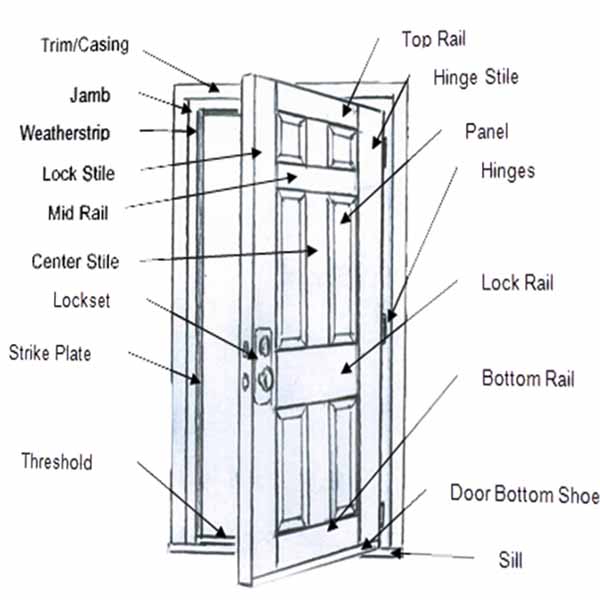
To Drip Cap, or Not to Drip Cap?
What are drip caps
A drip cap is an L-shaped strip of flashing (usually aluminum, PVC or vinyl) that protects windows and doors from water entry from the top. It is installed after the window or door, but before the siding is installed around the frame. (see illustration)
One leg of the “L” goes over the window while the other leg lies behind the siding that will go above. This is used over the top piece of trim to direct water away from the home.
Is a drip cap needed?
The short answer is, yes. Without the drip cap installed around openings, the water will either seep into the home and leak all-around doors and windows, or it will seep into the middle of double-paned windows. Neither of these options is good.
The best way to prevent water seepage into doors and windows is by installing the window drip cap.
Sometimes caulking may be suggested as an alternative to the window and door drip cap, but it is NOT recommended. Eventually, the caulk will break down and crack, allowing water to seep in. Drip caps are a longer-lasting option to prevent water seepage and provide more consistently reliable protection than caulk.
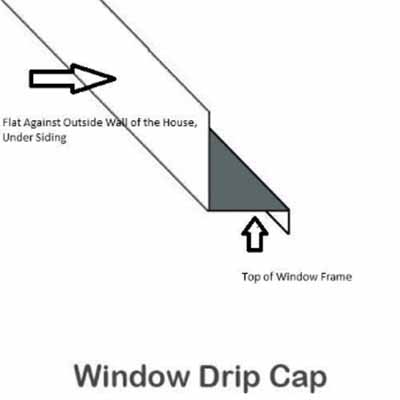
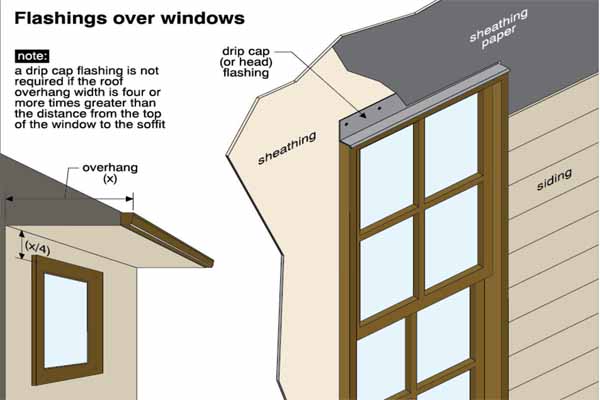
Doors and Windows - Life Expectancy & Summary
Windows and doors aren’t only an aesthetic part of the façade of a home or property. They’re also access points to the world and a means to see the outside world without being subjected to the elements.
Depending on the age of a home and/or its windows and doors, you’re likely to face the need to replace the windows and doors with more elegant and energy-efficient models that also provide sound-proofing and protection from severe weather.
A lot of planning goes into picking new windows and doors to maintain a quiet, comfortable, beautiful, and secure environment inside of your home. While the thought of window and door replacement can have you bracing yourself for major expenses, it’s also important to know when to replace them and how long they usually last.
Generally, the average life expectancy of vinyl windows and doors is between 20 to 40 years depending on the outside environment. Climates affect the rate of deterioration, especially hot climates with ample sunshine.
Windows and doors that were installed in the 1950s to the 1970s were made with quality materials that last, but there have been major advances in window technology over the years, which those older windows don’t have. It’s important to consider these factors when considering the investment in new windows for your home.
In addition, some other questions to ask yourself when making this important decision:
- Are there issues with condensation, mold, or rot on a wooden window or door frames, or invasive outside noise?
- Are the current windows and doors operating properly or are they hard to open and close?
- Have the current windows and doors become so difficult to clean that you simply avoid the chore all together?
- Have you tried fixing the old windows and doors but found it impossible to find the right parts due to outdated systems?
If you answered yes to one or more of these questions, then it might be time to consider new windows and doors for your home.
Broken Seals
Broken seals, or the failure of the substance used to contain the gas or air that provides insulation between the outdoors and the indoors, are the most common problem seen with modern windows.
Seals are composed of materials that are designed to keep the panes rigidly spaced. But if they absorb moisture, as some seal materials can, they will eventually deteriorate, break the seal, and allow leaking moist air between the glass panes.
Broken seals can lead to:
Condensation between the glass panes
If a window is foggy cannot be wiped clear, condensation has made its way past a broken seal. The fog may come and go, but eventually, the window will be permanently fogged.
Windows that never look ‘clean’
Regardless of how clean you keep the outside surfaces of the window glass, condensation and fog on the inside between the panes caused by a broken seal can’t be properly cleaned leaving the window always looking dirty.
Loss of Energy Efficiency
When the seal between the panes fails, the insulative capacity of the window is reduced. This is true whether the window contained argon, krypton, Low-E film, or even a third pane of glass. Losing this important energy-saving benefit removes a key benefit to upgraded windows.
Troublesome Operation
New windows or doors should operate with no problems. The home inspector will test the units and note whether it’s difficult to open, close, or lock. Left unaddressed, these problems can only get worse—and you might someday be left with a completely inoperable window or door.
Drafts or Outside Noise
One of the biggest benefits of high quality windows and doors (particularly double- or triple-pane windows) is the improvement in insulation. Better insulation means better energy efficiency and a reduction in outside noise. However, if you notice a draft, or if you can hear outside sounds equally well with the unit open or closed, the window or door is not insulated properly. This problem will cause an increase in energy bills, so don’t overlook it.
